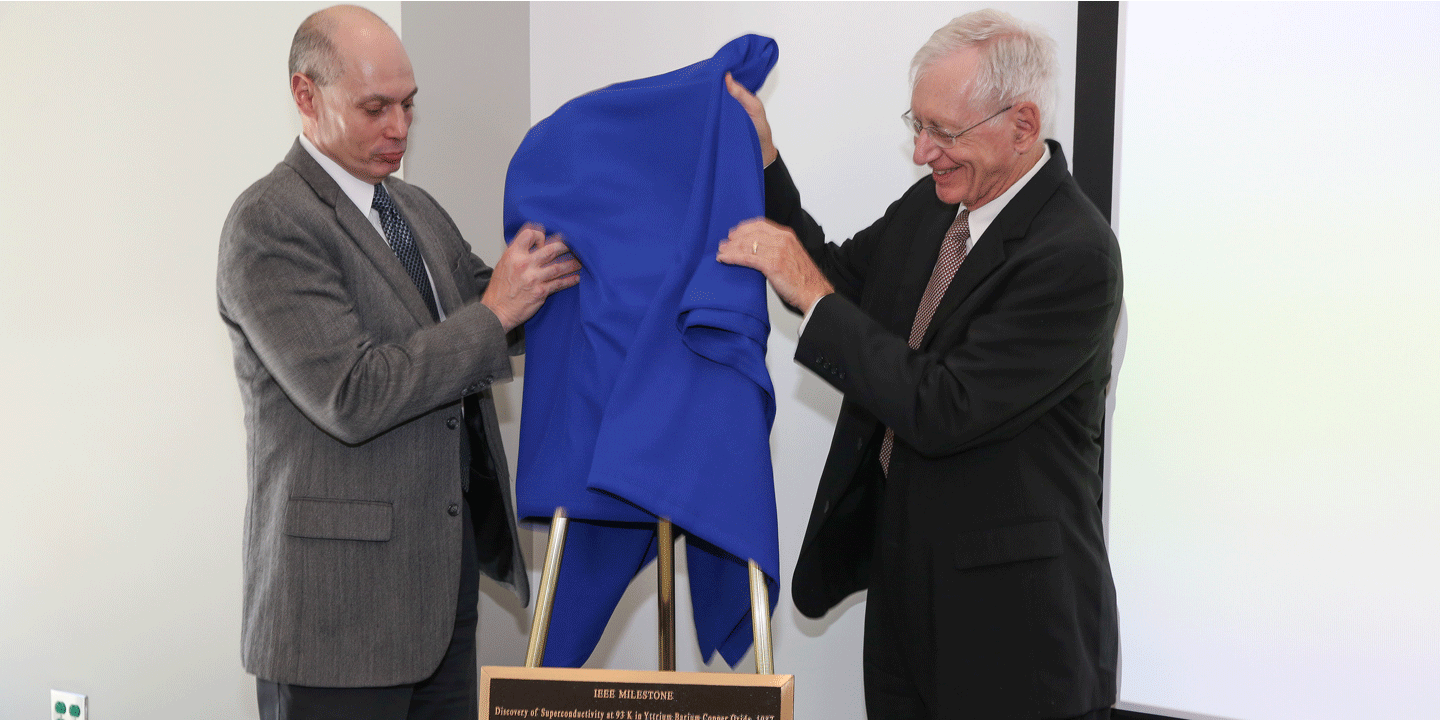The University of Alabama in Huntsville (UAH) announced this week that it has been honored by The Institute of Electrical and Electronics Engineers with a Milestone Plaque for a 1987 physics discovery.
The discovery of superconductivity at 93 Kelvin occurred on January 29, 1987, and the dedication of the award recognizes “the impact of the world’s first material to superconduct above the technologically significant temperature of liquid nitrogen.”
UAH said in a release posted to its website, “The material that is the subject of the discovery was first conceived, synthesized, and tested in a UAH physics laboratory in Wilson Hall. It has been referred to by some science writers as one of physics’ ‘Holy Grails.’ The discovery prompted an American Physical Society meeting in March of 1987 to become known as ‘The Woodstock of Physics.’”
The site added, “By crossing the 77 Kelvin barrier and making superconductivity possible at the temperature of the much more affordable and easily used coolant liquid nitrogen, the material discovered at UAH opened up a realm of more practical superconductivity applications.”
The site also noted that superconductors have been useful in powerful electromagnets, such as those used in MRI and NMR machines, maglev trains, and fusion reactor research; low-loss electrical power cables; fast fault current limiters; fast digital circuits; sensitive detection and measurement of magnetism, subatomic particles, and light, along with radio-frequency and microwave filters.
The UAH material has been used in high field magnets (holding the current record of 45.5 Tesla), electric power cables, fault current limiters, and radio-frequency filters.
A bronze plaque, which was presented on Monday, will be mounted outside the room that once served as the superconductivity laboratory at UAH.
The plaque reads as follows:
On this site, a material consisting of yttrium, barium, copper, and oxygen was first conceived, synthesized, tested, and — on 29 January 1987 — found to exhibit stable and reproducible superconductivity at 93 Kelvin. This marked the first time the phenomenon had been unambiguously achieved above 77 Kelvin, the boiling point of liquid nitrogen, thus enabling more practical and widespread use of superconductors.
Kyle Morris also contributes daily to Breitbart News. You can follow him on Twitter @RealKyleMorris.













